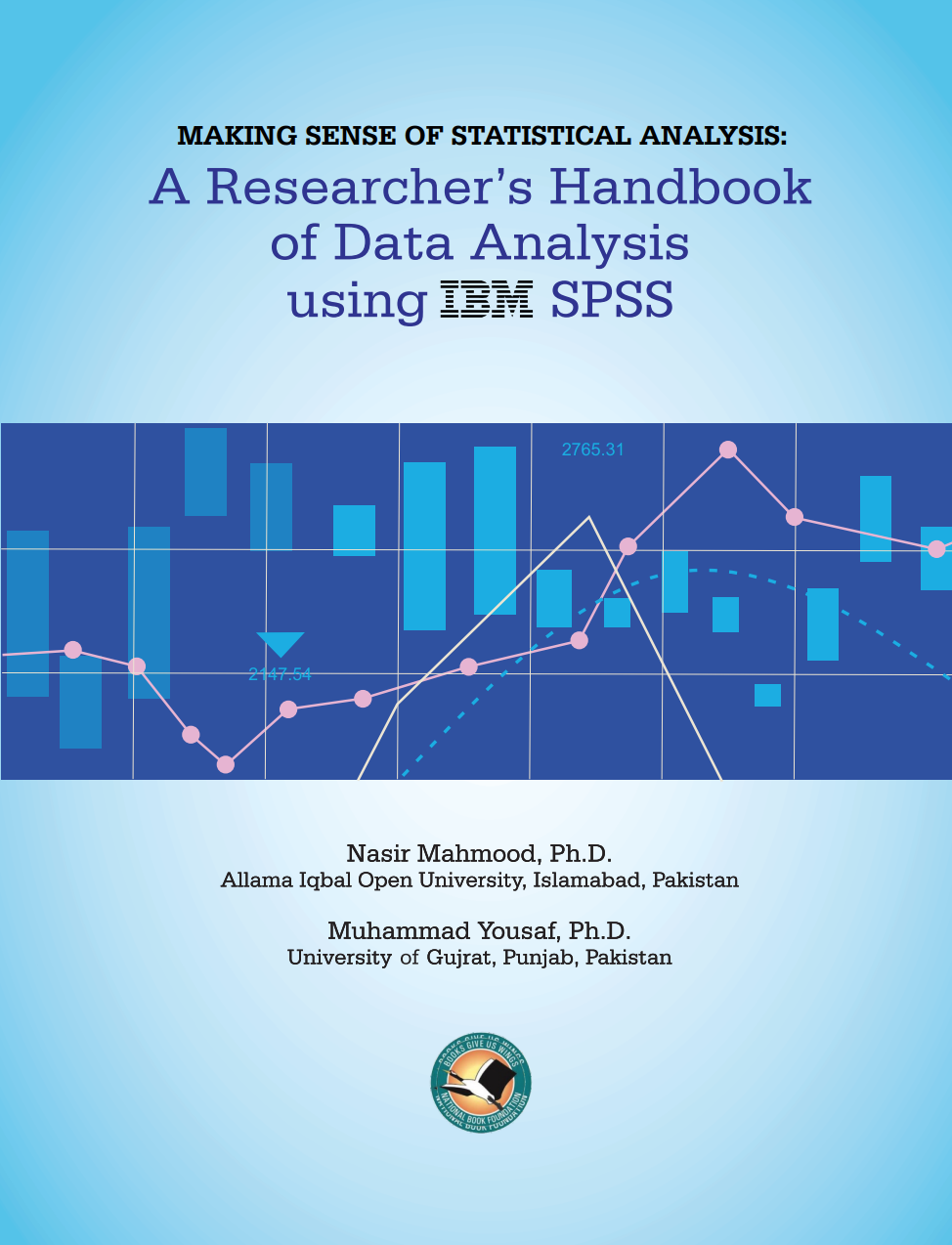
Making Sense of Statistical Analysis: A Researcher’s Handbook of Data Analysis Using SPSS
How to use this Book?
This book stands out from other texts on SPSS with its unique approach. We have tried our best to present the material in a straightforward, easy-to-understand and reader-friendly manner, ensuring that you feel at ease and less intimidated by the subject matter.
Firstly, when you analyze data using IBM SPSS, several tables are generated as an output. For beginners, these tables look confusing and complicated. To make these tables simple and understandable, we have used red color to highlight the parts of the tables that are necessary for reporting results in the form of tables.
Secondly, we have suggested guidelines for making tables according to APA format. This feature allows for the presentation of results in tabular form and the formatting of tables according to APA format.
Thirdly, we have suggested a general format for reporting the results of all statistical tests. We believe that this general format would serve as a useful guideline for reporting the results of the statistical tests that you conduct for your theses, research reports, and research papers.
Fourthly, all the SPSS data files used in this book for conducting statistical analyses along with questionnaires are available on the website of this book. You can download them from https://statanalysis.co. These data files are going to be useful for conducting statistical analysis independently to improve your data analysis skills and overcome the fear of statistics.
Buy Book
This is a concise and comprehensive book that thoroughly explores both the theory and practice regarding using statistics in research. Many excellent books deal with statistical theory, such as Gravetter & Wallnau (2014), Field (2017), and Stevens (1992). Likewise, some good books explain the practical use of SPSS to analyze the data in research projects. For example, (Pallant, 2020); Brace, Kemp & Sneglar, 2012). In a nutshell, some of these texts solely focus on the theory of SPSS, and others pay attention to the use of tests on a given data set. However, using SPSS without sound and logical statistical knowledge is useless and misleading for students and researchers. No book deals with reading the generated output as a result of analysis and reporting it according to APA format. Therefore, there was a need to write a book that is a blend of statistical theory and practical use of SPSS and equip the readers, students, and researchers with the knowledge of how to read relevant information from many confusing tables that are generated as output after analysis. We designed this book to understand the aforementioned three aspects of data analysis. Hence, this book presents statistical analysis as a dynamic process, from choosing a research design to selecting an appropriate scale, developing a codebook, data entry, editing data, scanning data, checking scale reliability, and validity. In addition to these basic introductory techniques, the book categorizes statistical tests into two broad groups. From a pedagogical point of view, this book intends to address the gap in the existing literature. It presents a comprehensive text that deals with theoretical and practical aspects of data analysis. In addition to this, we have added in ‘focus box’ to highlight the salient points for conducting analysis and reading outputs when reporting results.
At the most obvious level, these statistical analysis groups are grouped under descriptive statistics and inferential statistics. At the descriptive statistics level, mode, median, and mean are presented as measures of central tendency, whereas range, variance and standard deviation are treated as measures of variability. At the level of inferential statistics, we have divided statistical tests into four broad categories to make this text direct, logical, and reader-friendly. To be more specific, inferential statistics are covered under the umbrella of the tests of association, tests of difference, tests of prediction, and tests of nominal data. We have followed the aforementioned approach to make understanding of diverse inferential statistics simpler, more straightforward, and understandable for the students and the researcher alike. In this quest to pursue simplicity, clarity, and avoiding ambiguity, we categorized each of the aforementioned inferential tests into further sub-categories.
To achieve this end and make the learning process more practical, the tests of association are categorized into parametric tests of association and non-parametric tests of association. Similarly, the comparison tests are divided into parametric tests of comparing two means and non-parametric tests of comparing two means. Moreover, comparing more than two means is grouped under the parametric tests of comparing more than two means and non-parametric tests of comparing more than two means. This practical categorization will help you understand and apply these tests in real-world scenarios.
Going a step further to ascertain this clarity, we have explained tests of prediction in detail both for continuous and nominal/categorical data. The section on nominal data covers five chapters to provide students and researchers with in-depth knowledge about the tests of nominal data. This is the less explored part of statistics analysis books. As a result, we are confident that this division would make the use of SPSS useful to beginners and students taking advanced statistical analysis courses, as well as to the researchers intending to use SPSS in analyzing the data for their research projects. Aside from this simple and logical division of inferential statistics, we are sure that the direct, simple, clear and reader-friendly style of this book would be beneficial for understanding statistical analysis. We hope this book will be an excellent addition to aid both theoretical and practical understanding of SPSS.
Recent Comments
No comments yet.
Leave a Reply
You must be logged in to post a review.